#Tips

Books to Fast-Track Learning Norwegian
Tips for amusing books to read when trying to improve your Norwegian skills
As a multilingual person, I found learning Norwegian particularly difficult. Not because of the language itself, but because everybody speaks perfect English, minimizing the need to use it outside of class. But reading books can be done anytime, without any pressure, and it helps to speed up the learning process just as much. Here you can find tips from both locals and international students on what books they would recommend for a fun and engaging experience. There is something for every level!

3 Books to Read If You Only Started Learning Norwegian (A1-A2)
You may want to choose children's books, as they tend to have simple sentences and repetitive vocabulary, making such words more easily memorisable. But simple does not mean boring.
1. Short Stories in Norwegian for Beginners
Author: Olly Richards
Find it in a library: Short Stories in Norwegian for Beginners
Sara, an exchange student from Singapore, has been trying to learn Norwegian from the moment she knew her exchange semester would take place in Norway. When asked about books that helped her improve, she insisted that Short Stories for Beginners must be mentioned, as it has helped her when learning Korean, French, and now Norwegian.
– As the book is tailored for language learners, there is text written on one side and its English translation on the one next to it. That way you can go back and forth as necessary, eliminating the annoying need to stop, open a dictionary, translate a word, and get back to reading over and over again, completely interrupting the flow of the text. It feels like reading for pleasure, not just learning vocabulary. Plus, the stories are specifically written for the book, so it is guaranteed you have not heard of them before, and you can expect lots of unconventional ideas and plot twists, making it more entertaining than kids books.
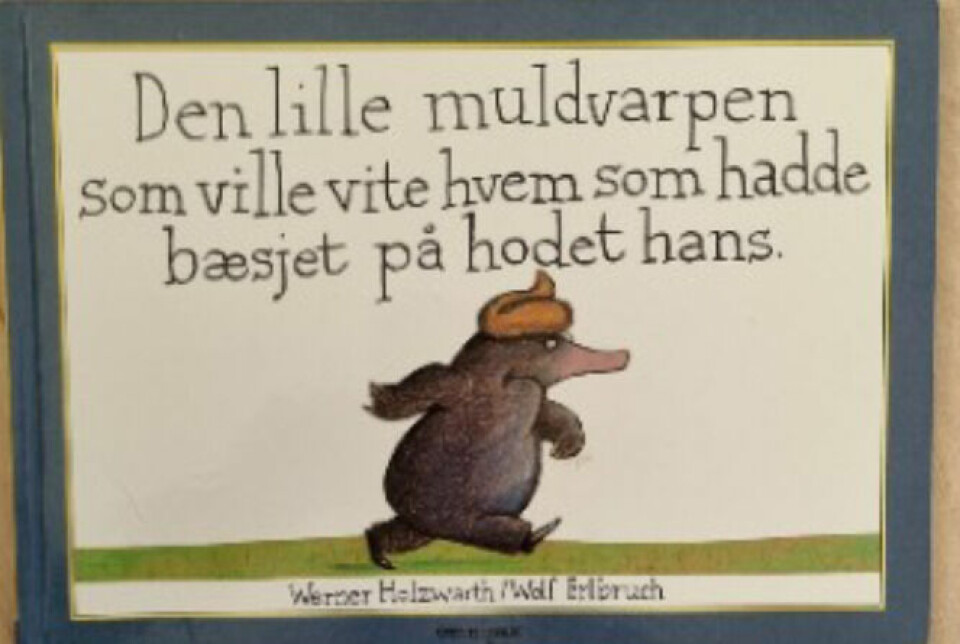
2. «Den lille muldvarpen som ville vite hvem som hadde bæsjet på hodet hans»
Authors: Holzwarth Werner, Erlbruch Wolf
Find it in a library: Den lille muldvarpen som ville vite hvem som hadde bæsjet på hodet hans
Proactively trying to help me learn, Olav has been sending me book tips from the day I told him I attended my first Norwegian class. He described this one as "the book based on an old German folk story that features a little mole who wakes up with a poop on his head. He then walks around the farm to find out who did it so that he can enact his revenge." Since I had hard time wrapping my head around the fact someone would write such a book, Olav spent over an hour searching for it in the children's section in Bjørvika library to prove the point, and this is why he thinks you should read it, too:
– Books with cute animals would be enough to entertain me as a child, but the premise of this one is so ridiculous that I found it absolutely hilarious. The idea that this is the kind of book we read as kids makes me laugh to this day. It repetitively uses the same phrases, so it is a nice way to learn about animals while giggling about the plot.
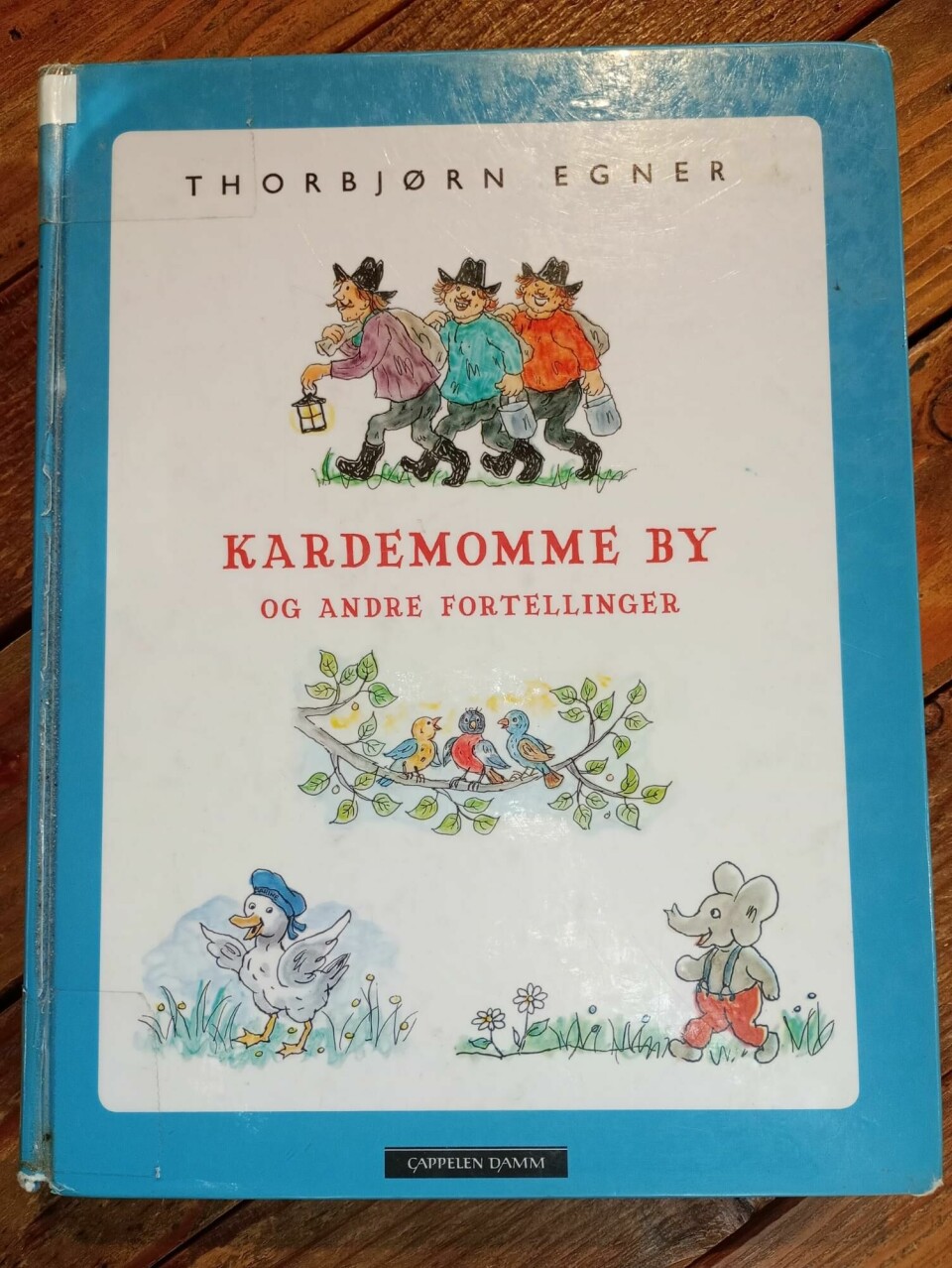
3. «Folk og røvere i Kardemomme by»
Author: Thorbjørn Egner
Find it in a library: Folk og røvere i Kardemomme by
Barbara, once an international student trying to learn Norwegian, now language assistant leading conversation classes for A1-A2 level students, says that while she does not read much, «Folk og røvere i Kardemomme by» is a book they read in class when she started learning the language and it stuck with her.
She describes it as a typical Norwegian children's book about everyday life in a small Norwegian town, which contains lots of useful vocabulary about jobs, animals, and everyday life.
– It's a good example of how societal norms are communicated to children. It became so popular that you can find a movie, catchy songs that will get stuck in your head, and for an immersive experience you can even visit a theme park in Kristiansand.
2 Books to Reach For at the Intermediate Level (B1-B2)
Not being a beginner yet not being nearly fluent can be confusing, often frustrating, especially when trying to lead a conversation and struggling to properly express everything you would like to because words are not yet coming to your mind fast enough. Reading books could be a way to fast track the process of making the language become more natural for you. According to Barbara, students should aim to not stop to translate every word but rather keep reading and learn to derive meaning from the context, as that is what you need to do in conversations. Below you can find some books containing relatively simple vocabulary so that you set yourself up for a smooth reading experience.
1. «Gubben og katten»
Author: Sven Nordqvist
Find it in a library: Gubben og katten
When I asked Kristen about a recommendation for people trying to learn Norwegian, just like many others, she answered "any children's books." But to provide a more specific tip, she tried to think of a book not too difficult, yet versatile enough so that one could invest themselves in reading it. She landed on «Gubben og katten» in the end:
– Winne the Pooh, Mickey Mouse, Pat and Mat, Macha and the bear... you probably also had your favourite characters whose adventures you liked to follow as a child. For me, it was the stories of the old man and the cat to whom something unforeseen always occurs, no matter if they are just going for a trip to the forest, chill at home, or are preparing to celebrate Christmas.
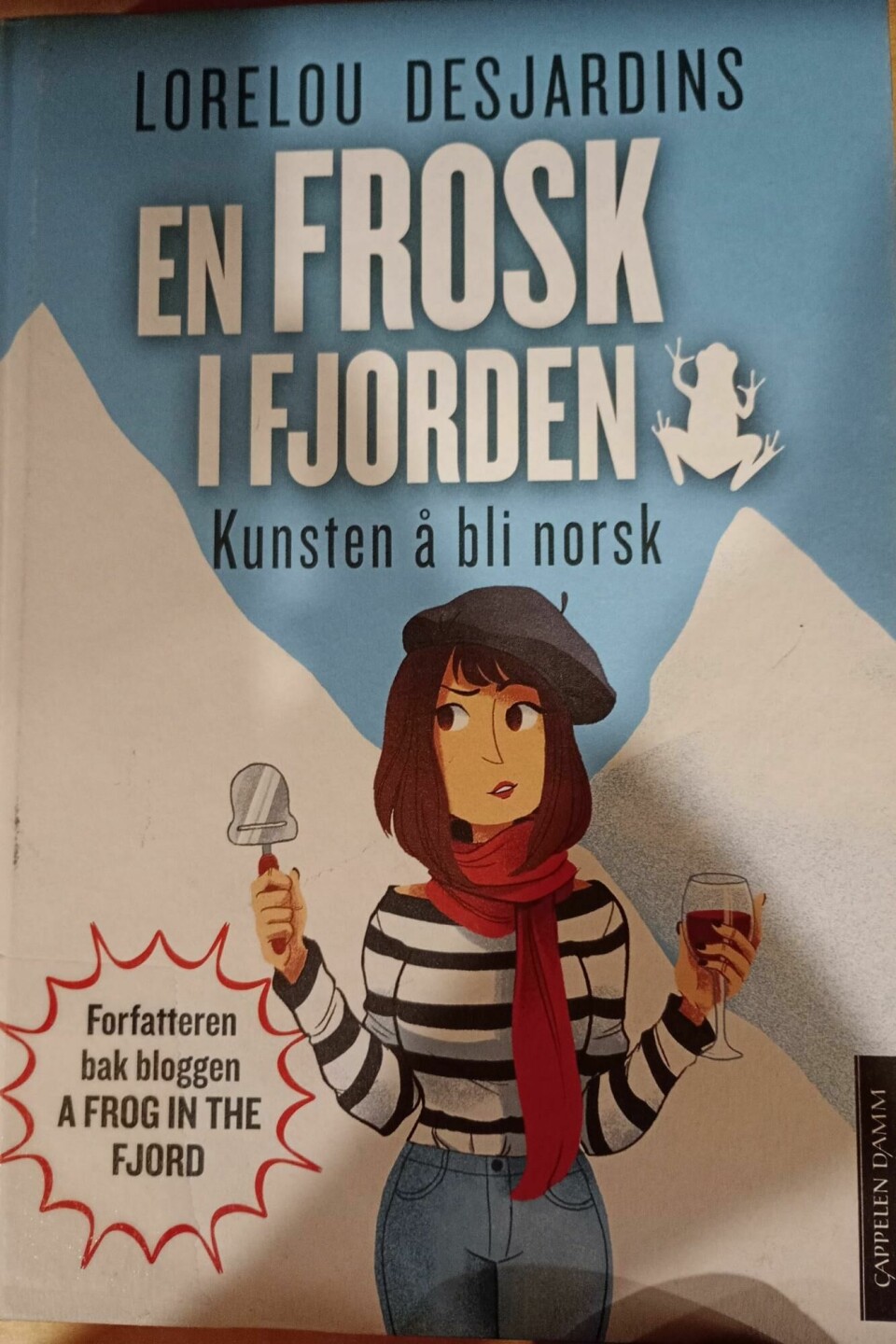
2. «En frosk i fjorden – kunsten å bli norsk»
Author: Lorelou Desjardins
Find it in a library: En frosk i fjorden
Marylin was not particularly looking for a book to read, but someone mentioned «En frosk i fjorden» to her, because she shares the same surname with the author, and these are her impressions:
– Before you moved to Norway, you have certainly heard some stereotypes about the people and the country. For example, on the first day of buddy week someone asked how to make friends with locals when it is known they are so introverted. Or I heard many from my grandmother, among them that it is impossible to get hold of foreign products in Norway. While that is an exaggeration, I could not fathom how big the percentage of products, no matter if it is food, clothes or other things, are actually local. These, and many other differences, surprised the author as well when she moved from France to Norway, and she is using satire to talk about it. So if you want to reassure yourself that you are not the only one who experienced strong cultural shock and to ponder about Norwegian traditions as well as their ways of thinking while having a good laugh, give this book a go.
3 (of many) Books to Read If You Are Advanced (C1-C2)
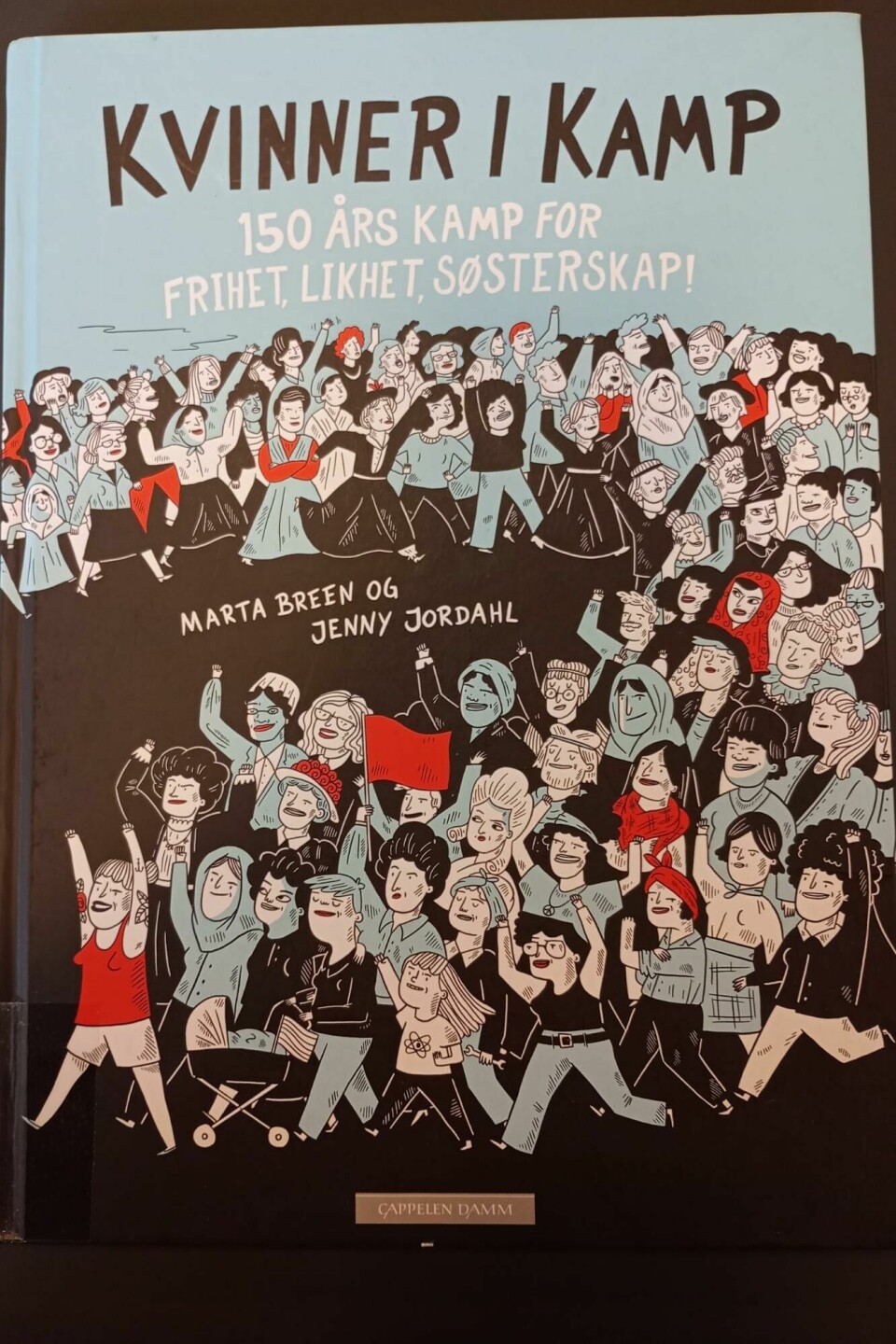
Congratulations on your mastery of another language! At this point, you are probably able to read almost any book and understand the majority of it. Enjoy it and make use of it, for example, by opting to read books of Norwegian authors in their original forms, as that allows you to truly savor every nuance the author intended to convey.
1. «Kvinner i kamp»
Authors: Marta Breen, Jenny Jordahl
Find it in a library: Kvinner i kamp
I have seen this book shared in a Facebook group that posts Norwegian literature translated to my native language (Slovak). When writing this article, I reached out to my friend Eva to ask if she has read it as, rather unusually for a French person, Norwegian is her third language. Plus, she is very engaged with the topic of feminism. Of course she has read it, and this is what she wanted to share about it:
– Feminism here, feminism there, these days the term is being frivolously thrown around as a label for anything related to women's lives, be it as a term of pride or as an insult. It remains a fact, though, that 150 years ago men and women led vastly different lives. Since then, however, women have started organizing themselves, which led to significant rearrangements in the society. In this book, you can read about some impactful moments spurred by remarkable women. Don't worry, it is not a factographical book with an enumeration of events that only an academic searching for a quote for their research could get through. Quite the opposite, written by a journalist, it is very captivating, and, best of all, it is a comic, so you can amuse yourself with elaborate visuals as well!
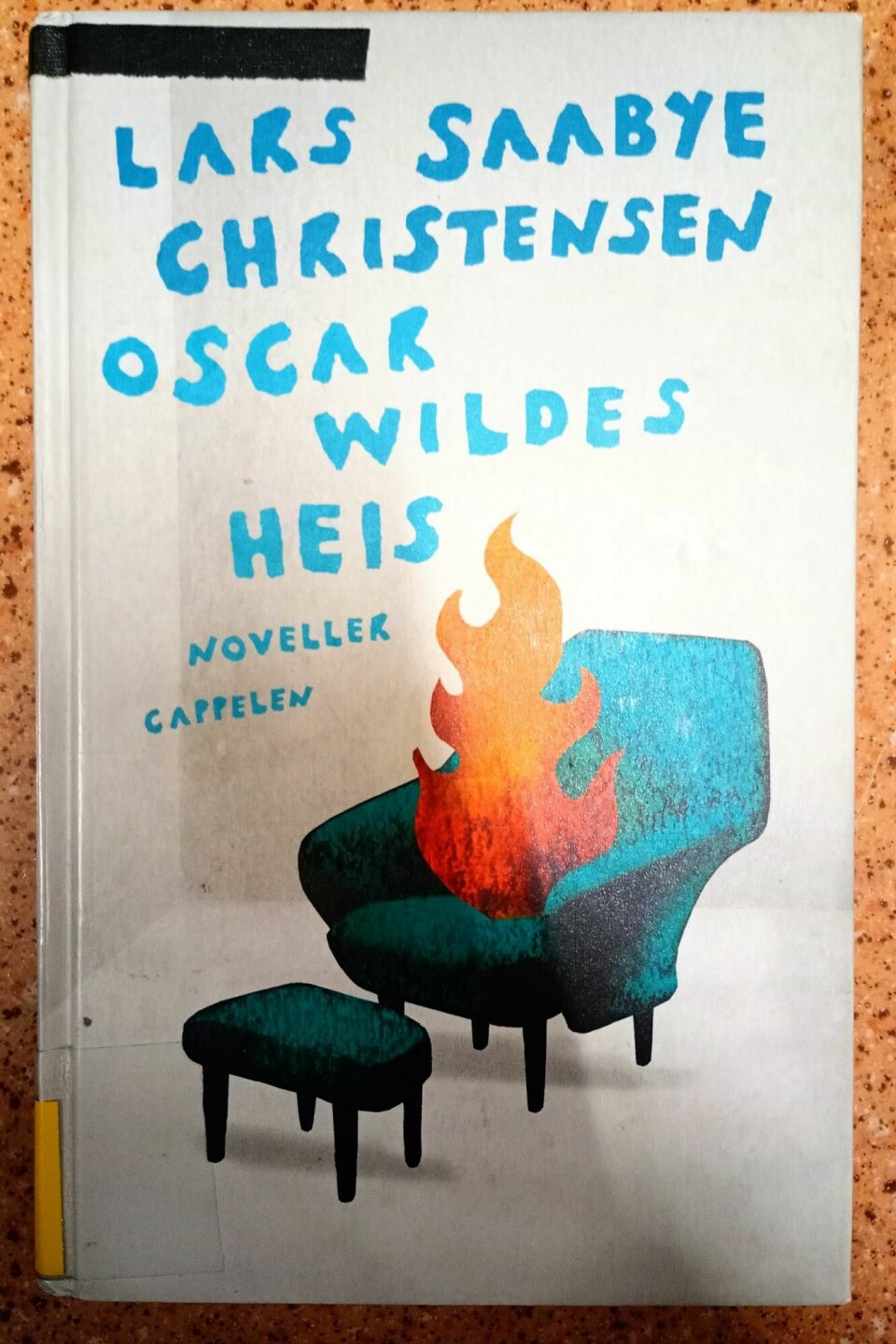
2. «Oscar Wildes heis»
Author: Lars Saabye Christensen
Find it in a library: Oscar Wildes heis
«Oscar Wildes heis» is a book I once saw my friend Eirik reading during a break between classes. When language assistant Ekaterina mentioned one of the stories in the book, I texted him to ask about it and this is was his response:
– What is a pig, surely, everyone knows. But what is a pig for each and every one of us might not be the same. Read this book if you feel like pondering how our perceptions may vary based on personalities, cultures, and time.
3. «Ut og stjæle hester»
Author: Per Petterson
Find it in a library: Ut og stjæle hester
An avid reader, Thomas, an exchange student from France, has been on the quest of using the opportunity of being in Norway to get to know more local authors. He found «Ut og stjæle hester» particularly impactful because of how it conveys the gravity of various events.
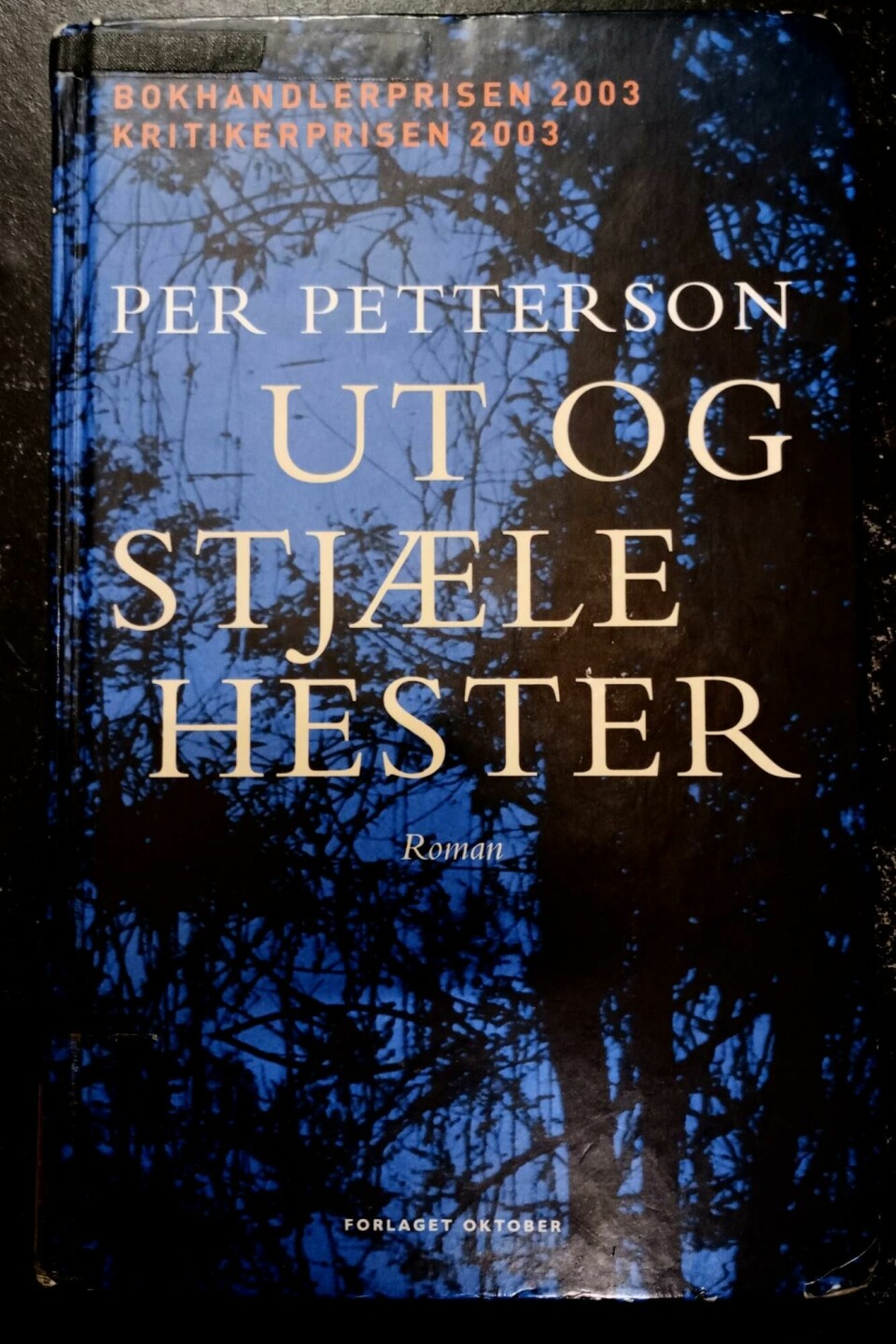
– Surely sometimes you lay in your bed and think of -that- embarrassing thing you have done years ago. Or -that- thing you wish you had done differently. Or -that- thing you wish has never happened because now you carry the burden forever. We all do so (or at least I hope I am not the only one who does). The main protagonist of this book does it, too. At the age of 67 he is confronted with the impact of events from his childhood that he hoped to forget but now has no other choice than to cope with.
Bonus: Honorary Mentions – Pick Any Book
Presented in the order of overall difficulty of stylistics and vocabulary the writers tend to use, although it may vary from text to text:
Hanne Ørstavik
Her writing style is short and to the point. So if you do not enjoy volumes of paper dedicated to world building (and think Lord of The Rings could have easily been shortened by half), you might be pleased that Hanne Ørstavik does just that, not leaving any time for you to become impatient about what shall happen next.
Erlend Loe
Originally a humorist writer, in later works Loe moves towards satirical commentaries. If you need a reason to laugh, be it about funny occurrences or about the misery of the world we live in, you should try to read some of Erlend Loe's books.
Jo Nesbø
When a new book of Jo Nesbø would come out, it would always be displayed at the entrance of any bookshop I have visited, be it in France, Belgium, Slovakia, or Korea. Nesbø's international fame speaks for the quality of his work, and you have likely heard of him, too. And now you can read his works as they were originally written! Many of us, international students, are currently fearing how to cope with the darkness of Scandinavian winter, but you can use it to your advantage, as it sets up a perfect atmosphere for the crime, horror, and mystery fiction Jo Nesbø is known for.
Henrik Ibsen
Considered the father of realism, Ibsen is one of the most important Norwegian writers. Although the language of his plays might be difficult to understand since they were written a long time ago, it is certainly worth a try.
































